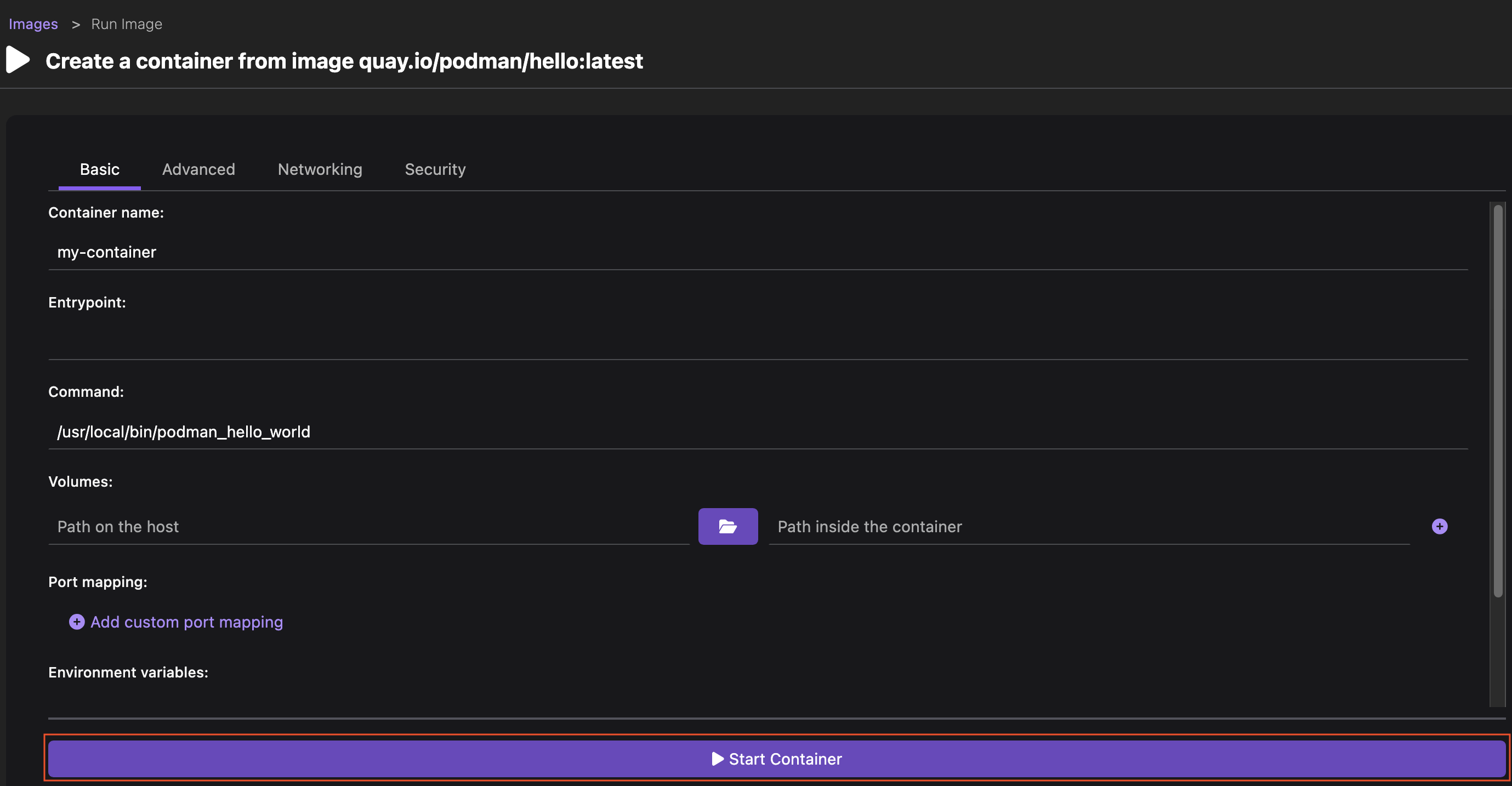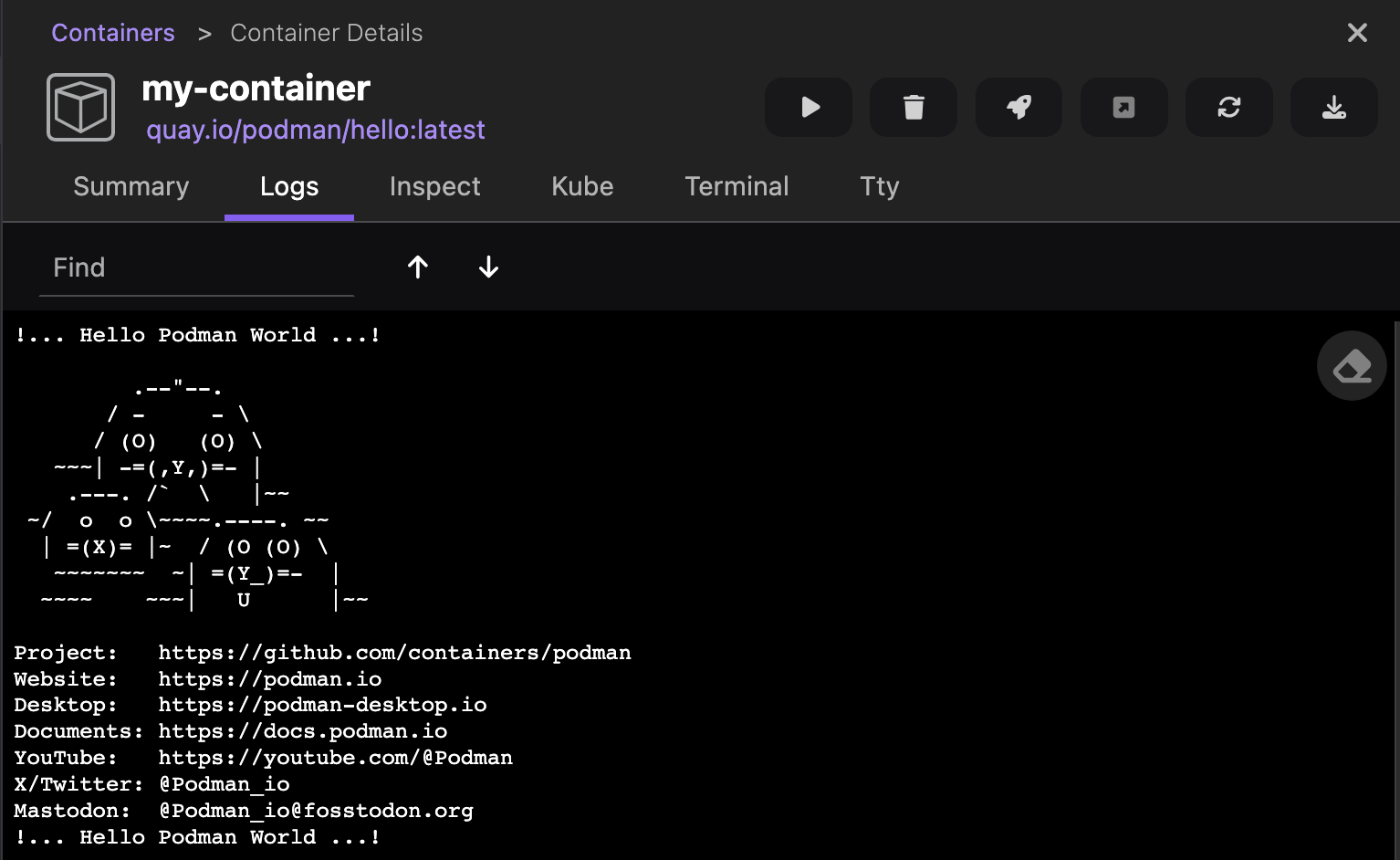Starting a container on your container engine
With Podman Desktop, you can start a container from an image on your container engine. You can interact with the running container by using the terminal or by opening your browser to the exposed ports.
Prerequisites
- A running Podman machine.
- The Images list has your image, such as
quay.io/podman/hello. See Pulling an image.
Procedure
- Go to the Images component page.
- Click the Run Image icon corresponding to the image you want to run. For example,
quay.io/podman/hello.
- Review or edit the container configuration details.
- Click Start Container. The Container Details page opens.

- Select the Logs tab to view the program running.

- Click the close icon on the right side of the page.
Verification
- Go to the Containers component page.
- : Enter your image name, such as
quay.io/podman/hello, to find your running container. - Click your running container name to perform any of the following tasks:
- View the logs
- Inspect the container
- Go to Inspect.
- Click the content area to activate it.
- Press Ctrl + F on Windows and Linux, or ⌘ + F on macOS to start searching the content.
- Generate a Kubernetes YAML manifest when your container engine is Podman:
- Go to Kube.
- Click the content area to activate it.
- Press Ctrl + F on Windows and Linux, or ⌘ + F on macOS to start searching the content.
- Optional: Copy the content to a YAML file.
- Optional: Reuse this file to create a pod that you can run on a Podman engine or a Kubernetes cluster. See Pod creation with Kubernetes YAML.
- Access the terminal
- Access the application by exposing a port:
- Click .
- View the running application at
localhost:portin your browser.
- Deploy the container to a Kubernetes cluster